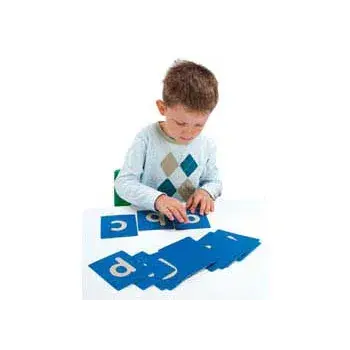Supporting Non-Verbal Children: Strategies for Success
- Neralea Dell

- Mar 25
- 4 min read
Updated: Apr 8
Understanding the Challenges of Non-verbal Children
Non-verbal children, often found on the autism spectrum, may communicate through alternative methods like sign language, gestures, or facilitated communication. This different approach can create barriers when conventional learning methods, which rely heavily on verbal communication, are used.
The absence of spoken language can lead to misunderstandings, frustration, and feelings of isolation for both the child and the educators or caregivers involved. Additionally, traditional assessments often fail to accurately gauge a child's understanding and progress, making the teaching process even more complex.
When non-verbal children exhibit delayed communication skills, it underscores the necessity for customized strategies. The key challenge lies in engaging these children in meaningful ways that resonate, fostering their cognitive skills despite the communication barrier.
Effective Resources for Non-Verbal Learning
When teaching non-verbal children, leveraging the right resources can significantly enhance the learning experience. Here are some highly effective materials and tools to consider:
Visual Aids: Charts, pictures, and illustrations are vital because they convey concepts without words. Resources like visual schedules can streamline routines, minimizing anxiety during transitions.
Interactive Technology: Tablets and communication devices equipped with speech-generating apps can support language development. For instance, the app Proloquo2Go has helped thousands of non-verbal children express their needs and feelings more effectively.
Sensory Materials: Items such as textured books, toys, or sensory bins can provide hands-on experiences that enhance learning. Research shows that incorporating sensory materials can increase engagement by 50%.
Specialized Programs: Programs like the Picture Exchange Communication System (PECS) are designed specifically for non-verbal learners. PECS can lead to an increase in spontaneous communication.
Social Stories: These simple, visual narratives are designed to teach social concepts or skills. They can be particularly effective in guiding non-verbal children through social interactions and expectations.
Teaching Reading to Non-Verbal Children
Teaching reading to non-verbal children hinges on the use of visual and contextual cues. Here are some successful strategies:
Word-Picture Associations: Start with simple words paired with pictures. Encourage children to match words with images to build vocabulary. For example, using flashcards that show a cat with the word "cat" helps with recognition.
Use of Learning Apps: Many apps cater to non-verbal learners, assisting them in developing phonics and comprehension through interactive activities.
Storytime with Alternatives: Enhance reading sessions with visuals, gestures, and expressive storytelling. Incorporating puppets or props increases fun and maintains attention.
Teaching Spelling Techniques
Teaching spelling to non-verbal children involves patience and creativity. Here are effective methods to try:
Multisensory Learning: Engage different senses by using sandpaper letters for tracing or edible letters for reinforcement. This method can significantly enhance retention rates.
Word Walls: Create a word wall in your learning space. Children can interact with and contribute to this display, solidifying their grasp of spelling.
Interactive Games: Use games to make learning enjoyable. Spelling apps and board games that add competition can spark enthusiasm and enhance motivation.
Teaching Math Concepts
Mathematics can be intimidating but can also be accessible with the right strategies:
Concrete Objects for Counting: Use physical items like blocks or beads for counting. This hands-on method helps children understand abstract concepts better.
Math Apps: Leverage educational apps that offer gamified math exercises. A study discovered that children who used these apps found math more enjoyable and improved their scores.
Incorporate Routine into Learning: Teach math through everyday activities. Counting items during grocery shopping or sharing snacks can make concepts relatable and practical.
Tricks to Facilitate Learning
While teaching non-verbal children, consider these helpful tricks:
Routine and Structure: Establishing a consistent routine offers predictability, helping children feel secure and focused. A structured environment can reduce anxiety in non-verbal children.
Positive Reinforcement: Celebrate even the smallest achievements with rewards tailored to individual preferences, like praise, stickers, or extra playtime. This encouragement fosters motivation.
Communication Alternatives: Encourage the use of AAC (Augmentative and Alternative Communication) tools to enhance engagement and understanding. Research indicates that using AAC can significantly improve communication outcomes in non-verbal children.
Collaborative Learning: Support group activities that promote peer interactions. Facilitating buddy systems can enhance social skills and foster a sense of belonging.
Assessing Learning Progress
Assessing the progress of non-verbal children can present challenges but is achievable. Here are effective methods to consider:
Observational Assessments: Focus on behavioral indicators like engagement and participation instead of traditional tests. This method allows for a more accurate understanding of a child's progress.
Checklists and Portfolios: Compile records of children's work and progress over time. These tools can demonstrate growth and mastery of concepts effectively.
Peer Feedback: Facilitate opportunities for peers to interact and provide constructive feedback. This acknowledgment can be vital in gauging social learning and improving communication.
Regular Communication with Parents: Keep communication open with parents or caregivers to discuss observations, challenges, and successes. Parents often provide valuable insights into the child's learning at home.
Final Thoughts: Embracing the Journey
Teaching non-verbal children requires understanding, creativity, and resourcefulness. Though challenges exist, employing targeted resources and innovative strategies can unlock their potential. With dedication, patience, and a holistic approach, educators and parents can help non-verbal children thrive academically and socially.
This journey is not merely a challenge; it becomes a rewarding experience for everyone involved. As we navigate this path, remember that every small success is a step forward.









Comments